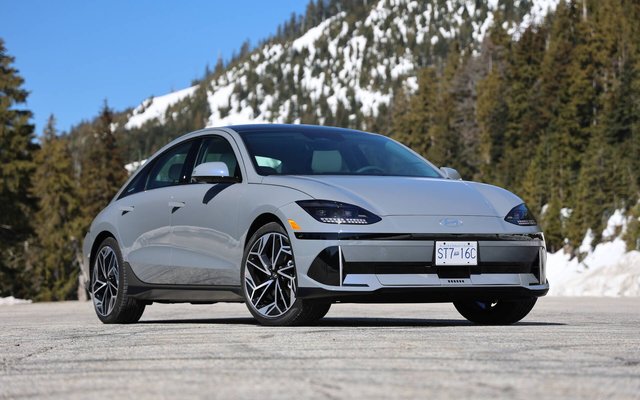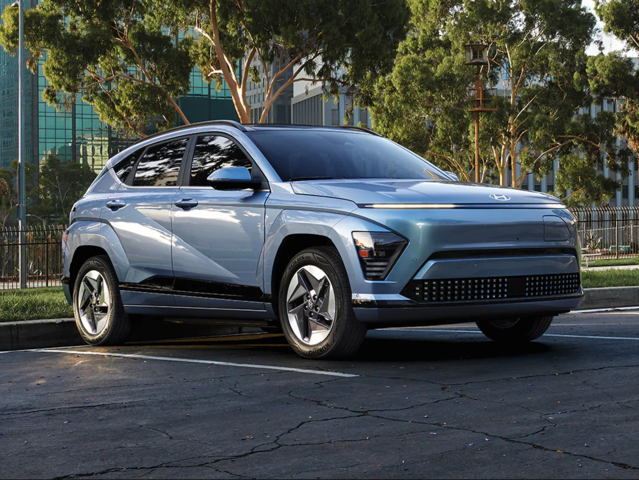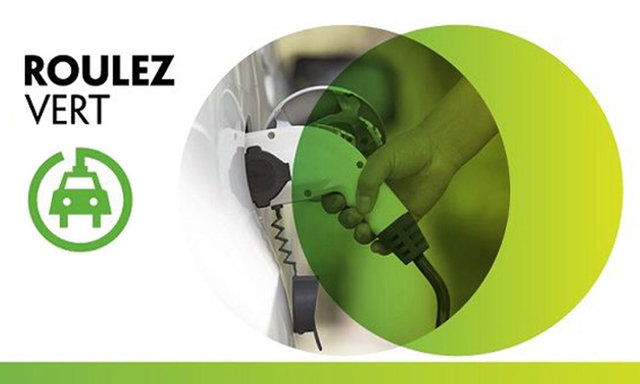Sales of traditional passenger cars have been plummeting for a while, yet Hyundai believes that the timing is right to launch an electric sedan. After all, isn’t the Tesla Model 3 the best-selling EV in Canada at the moment?
One reason, of course, is the limited availability of competitors such as the Chevrolet Bolt EV or Hyundai’s own IONIQ 5, the latter requiring Canadians to wait up to two years (sometimes longer) to get one.
Just as the all-new IONIQ 6 is about to hit the market, the conventionally powered Hyundai Sonata (only 2,744 units sold in the country last year) is getting a mid-cycle update that could prove to be its last, with no direct successor in line. The electric sedan is almost the same size but roomier and arguably better suited to meet the wants and needs of Canadian customers.
Bold Looks
The IONIQ 6 turns heads with a rear-end design similar to that of the old Infiniti J30 sedan from 1993. The Porsche 911-like spoiler appears to incorporate a solar panel but don’t be fooled. Some people love the car’s looks, others just don’t—there doesn’t seem to be any grey area. To its credit, though, the IONIQ 6 boasts an impressive 0.22 drag coefficient that makes a big difference in terms of efficiency and range.
Unsurprisingly, the platform and powertrain are shared with the IONIQ 5. Base models are single-motor RWD units rated at 225 hp. Together with the 77.4kWh battery, they can travel up to 581 km, which is 82 km more than a similarly equipped IONIQ 5. Therein lies the beauty of aerodynamics.
Move up to the dual-motor AWD models and you get a combined 320 hp. This, obviously, comes at the expense of range, which is still a remarkable 509 km. Adding the Ultimate Package with 20-inch wheels instead of the standard 18-inchers will drop maximum range to 435 km. How badly do you want the bigger alloys? Considering their sizable effect on range and also the firmer ride they generate, the wise thing to do is to forget about them.
More Inspiring
The IONIQ 5 crossover is not a vehicle that feels particularly exciting to drive. As potent as it may be, it just doesn’t compare to a Polestar 2 or Tesla Model 3 in terms of handling. The IONIQ 6, however, is a different story.
I’m not saying the Korean sedan matches the dynamic duo mentioned above, but there are fun times to be had behind the wheel, for sure. Steering feels sharper than the IONIQ 5’s, while the lower centre of mass and driving position contribute to increased agility. Adjustable regenerative braking also makes driving more pleasant depending on traffic conditions.
The IONIQ 6 is not only sportier and more inspiring than the IONIQ 5. It boasts more safety and driver assistance technology, too. For the first time in a Hyundai, Highway Driving Assist 2 is available, allowing drivers to initiate automatic lane changes simply by activating a turn signal. Tesla fans will probably scoff at it, but I’ve experimented with the system in dense traffic and it worked like a charm… until snow and slush came in the way of the sensors.
Two Trim Levels
The 2023 Hyundai IONIQ 6 comes in two trim levels including Preferred and Ultimate. Standard equipment is more than adequate, but I have to admit that the Ultimate Package (AWD models only) does have many desirable items like those 20-inch wheels, synthetic leather, power sunroof, Bose audio, 360-degree camera, 64-colour ambient lighting and two-way charging capability enabling users to power electronic devices or small appliances using the car’s battery. Take away the 20-inch wheels that affect range and ride quality, and it would be a no-brainer.
A pair of 12.3-inch displays highlight the interior, just like in the IONIQ 5. The instrument cluster in front of the driver is configurable, while the infotainment touchscreen on the right includes navigation. With icons and apps all over the screen, things can be a bit confusing at times, but there’s no denying the sharp graphics and fast-responding system.
The cabin of the IONIQ 6 proves very comfortable and accommodating. Headroom may be limited in the rear due to the car’s swooping roofline, but occupants enjoy significantly more space than in the Polestar 2 thanks to a flat floor and smaller centre console.
The Swedish star is more convenient with its hatchback body style, though, and the Model 3 offers 40 percent better trunk capacity than the IONIQ 6. Oh, and it’s too bad that Hyundai designers couldn’t find a way to integrate a dead pedal like in the IONIQ 5 or a similar drawer-type glove box.
How Much?
The 2023 Hyundai IONIQ 6 carries a starting price of $54,999 plus $1,925 freight and delivery. It also qualifies for the federal EV rebate of $5,000 plus provincial incentives of up to $7,000. The dual-motor IONIQ 6 with AWD retails from $57,999, and it’s probably the one that will prove the most popular in Canada.
Now, the biggest question is, will Hyundai be able to meet demand enough to prevent potential customers from turning to other brands? Remember, only one plant in the world builds the IONIQ 6, and it’s located in South Korea. Hopefully, Canadians won’t have to wait two years to get theirs.






